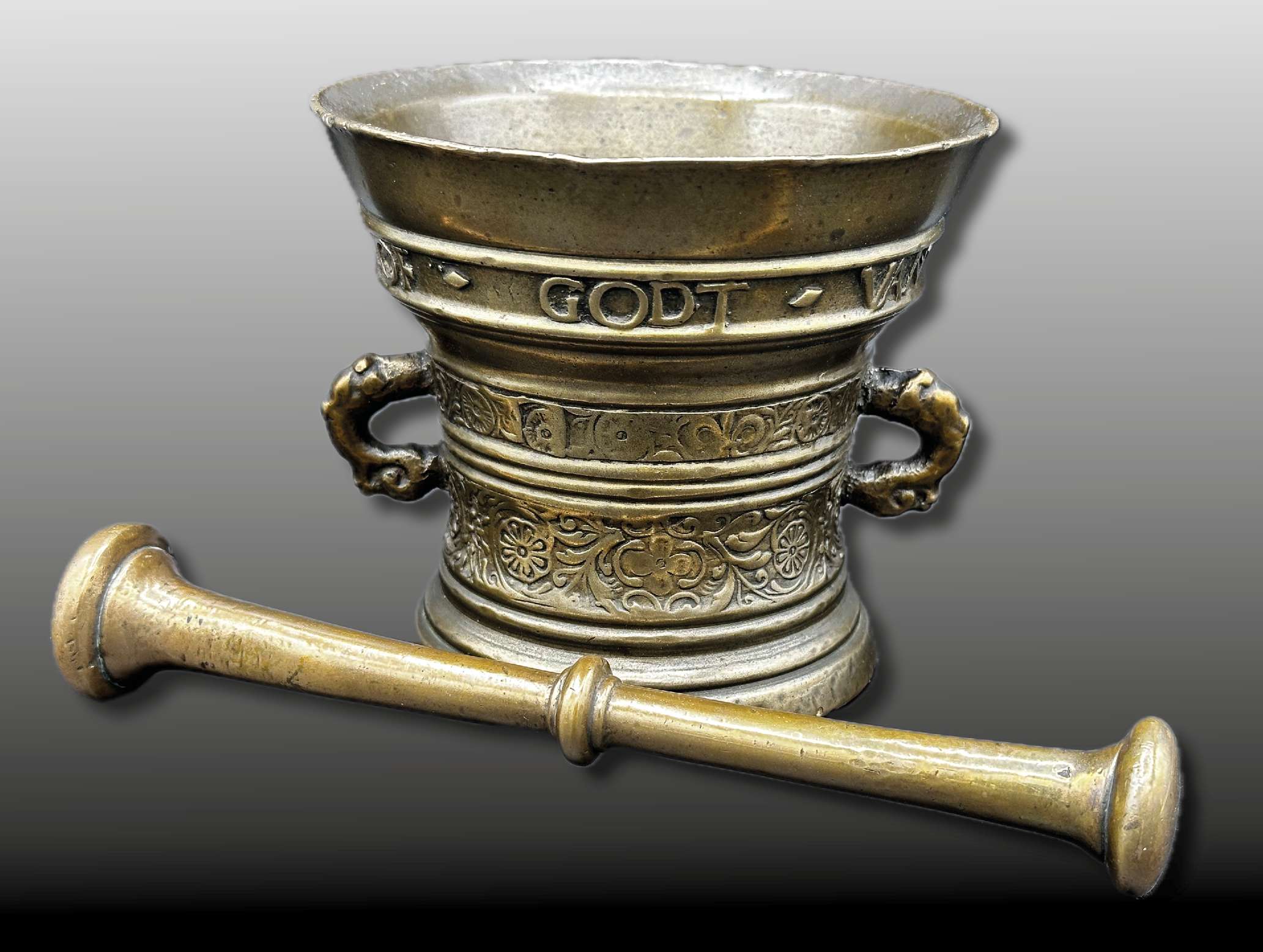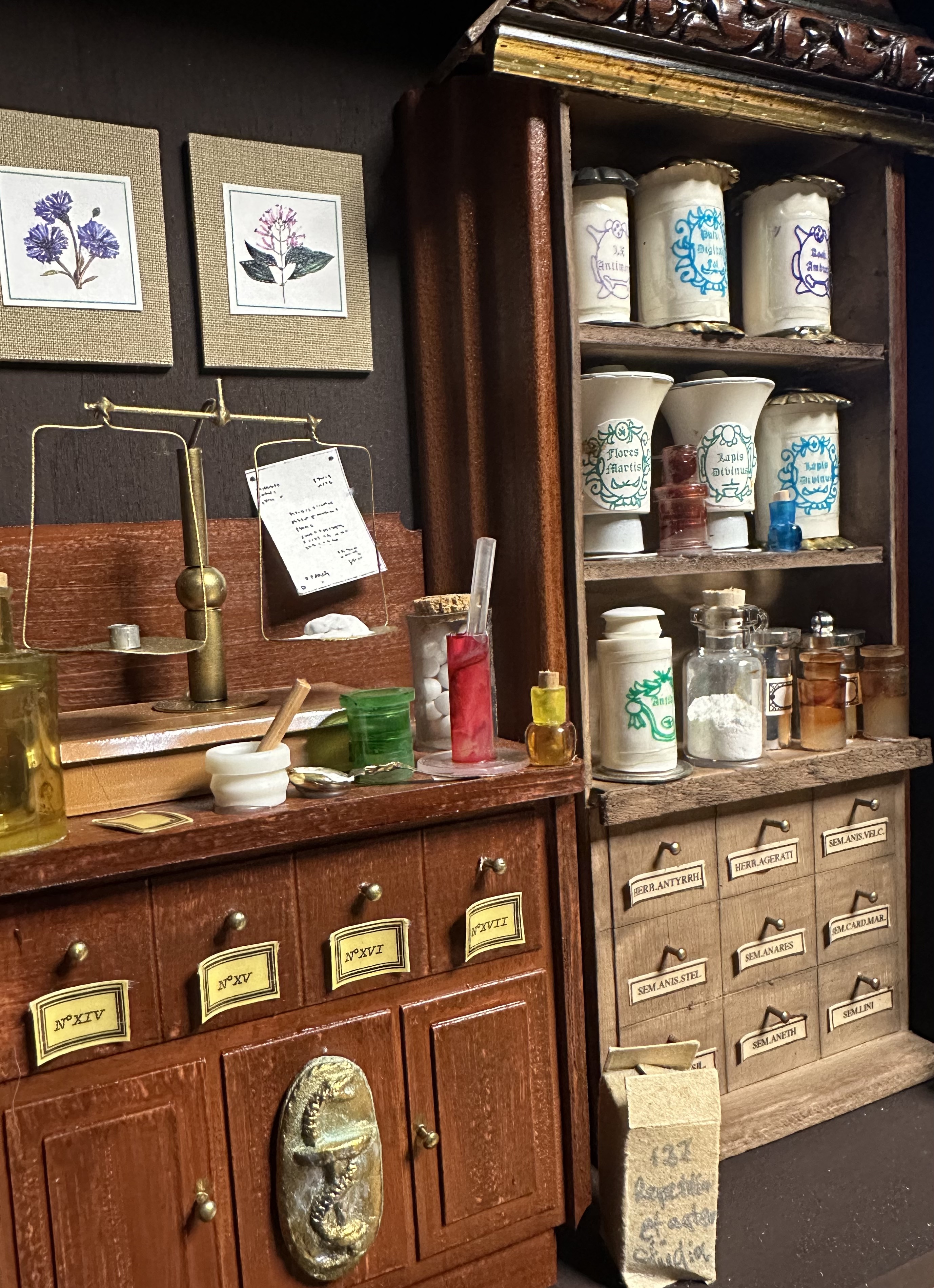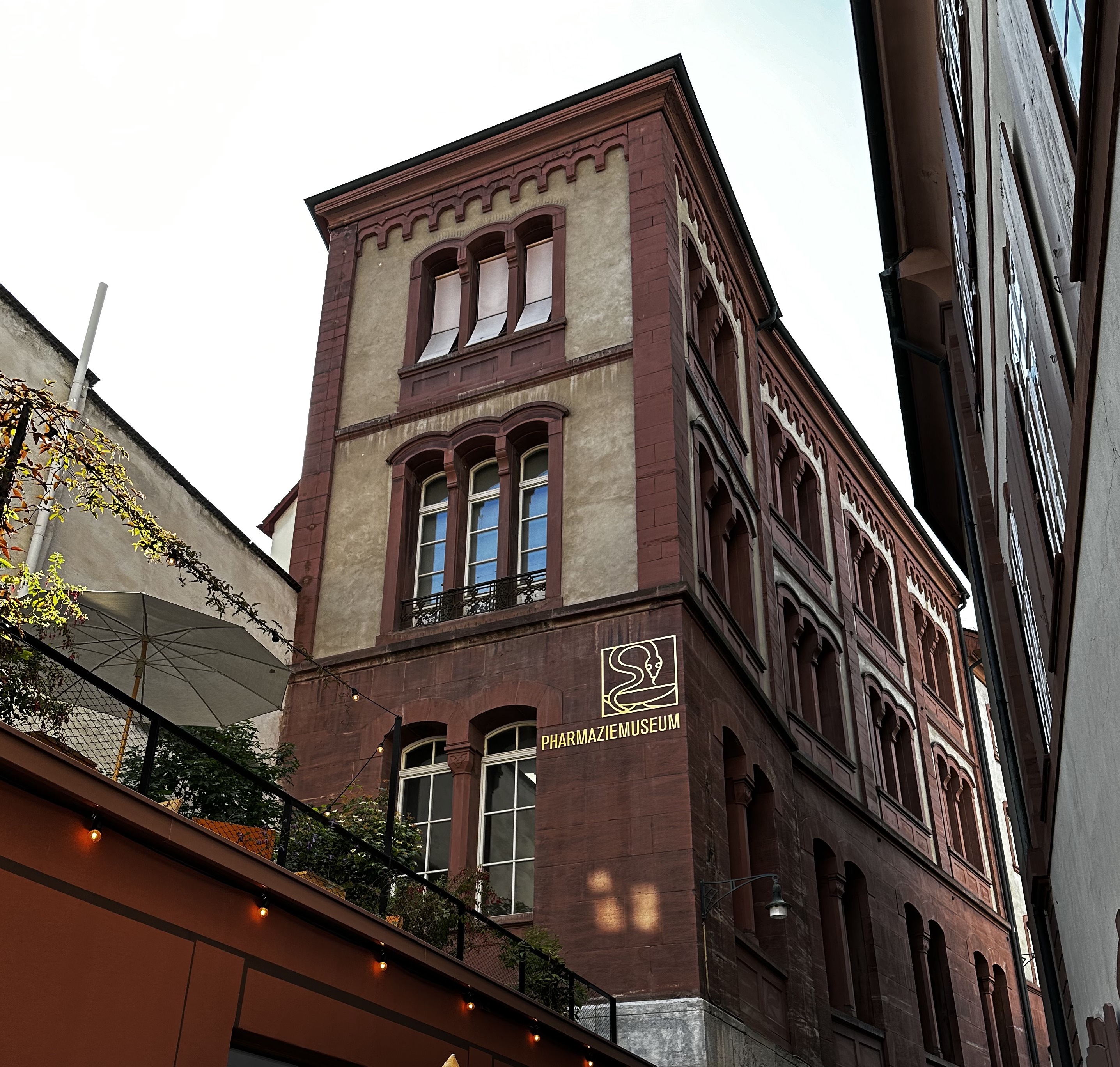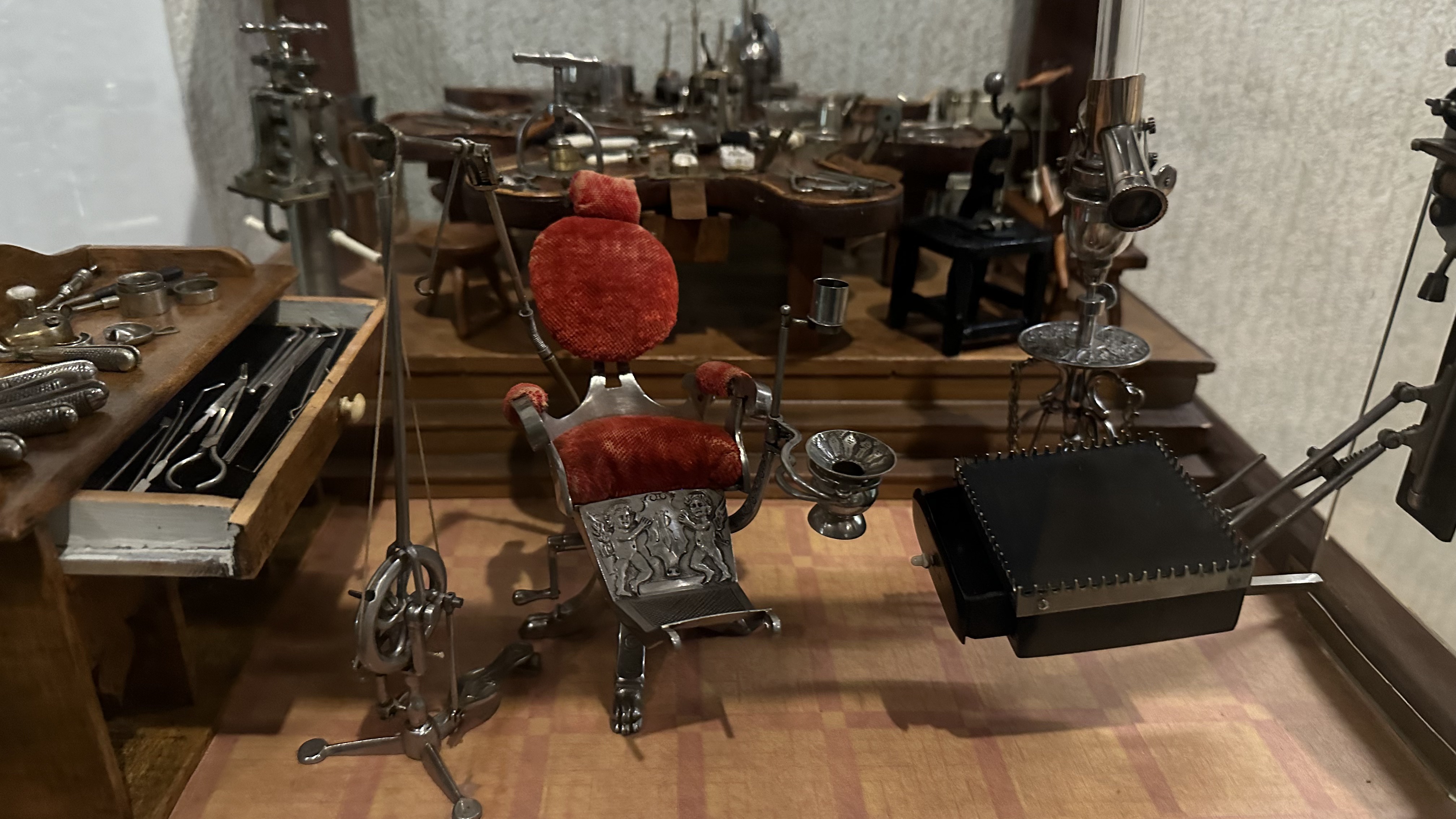Search results4 results
COLLECTION

Netherlands, 17 C.
Mortar and pestle, baroque, The Netherlands, 1638. Bell shaped, two carved handles, and two floral friezes. On the upper part circular inscription: LOF * GODT * VAN * AL * Ao * 1638 (Praise God by all, in the year 1638), 11 cm
GALLERY

France, 21 C.
Vintage Pharmacy ("Gründerzeit Apotheke"), diorama. Made by French miniaturist Jean Jacques Brisson. Diorama represents a fragment of the interior of an vintage pharmacy about end of 19th century in a glazed box with wall-hanger, integrated into an elegant wooden frame. In the pharmacy there is a presentation cabinet (cupboard) with albarelli (jars) with inscriptions of medicinal substances, the lower part of the cabinet has nine drawers with bronze handles and inscriptions. Next to the cabinet is the pharmacist's workplace, kind of a bureau of drawers with doors and lockers. On the working surface of bureau, pharmacist's scales, mortar and pestle, prescription, pharmacy shop rounds without stoppers, and other containers with substances are placed in a businesslike disorder.
MUSEUM

Switzerland, Basel
The Pharmacy Museum of the University of Basel (Pharmaziemuseum Universität Basel) is one of the largest and most important collections of historical pharmaceutical artifacts in the world, the only one of its kind in Switzerland. Its collection includes apothecary ceramics, fully preserved apothecary furniture, an alchemical laboratory, mortars, traveling apothecaries and surgical instruments, medical books, historical medicines and devices related to drug production. Museum is located in the heart of Basel's old town in the Zum Vorderen Sessel building, first mentioned in 1316. Over time, it has hosted notable figures such as Johann Amerbach, Johann Frobenius, Erasmus of Rotterdam, and Hans Holbein the Younger. In 1526-1527, the renowned Theophrastus von Hohenheim (Paracelsius) worked here, and his famulus Johannes Oporinus who later published Andreas Vesalius' groundbreaking anatomy book De fabrica corporis humani as well as works of Paracelsius.

Hungary, Budapest
The Hungarian people are proud of Ignaz Philipp Semmelweis (1818–1865), born in Pest to a catholic German family, the discoverer of the cause of childbed fever – fatal infectious complications in women in labor, and introduced effective measures of it's prevention in 1846. In his honour, the building where he was born in 1818 now houses a museum of the history of medicine bearing his name, which tells not only about Dr. Semmelweis, but also provides a multifaceted illustration of the main milestones in the development of European and world medicine. The remarkable permanent exhibition is complemented by regularly updated temporary exhibitions.